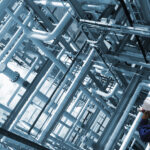The Transformative Power of 3D Laser Scanning Technology
Introduction to 3D Laser Scanning Technology
3D laser scanning technology is revolutionising various industries, offering unparalleled precision and efficiency. This innovative technology captures the exact size and shape of physical objects using laser light, creating highly detailed 3D models. Industries such as construction, archaeology, and manufacturing are leveraging this technology to enhance accuracy and streamline their processes.
How 3D Laser Scanning Works
Laser Emission and Reflection
The process begins with a laser scanner emitting a laser beam. When this beam hits an object, it reflects back to the scanner, which records the distance between the scanner and the object.
Data Collection
Millions of these distance measurements, or data points, are collected per second, forming a “point cloud.” This cloud represents the surface of the object in three dimensions.
Creating the 3D Model
Software then processes this point cloud to create a detailed 3D model, which can be used for various applications, from virtual inspections to precise measurements.
Applications of 3D Laser Scanning Technology
Construction and Architecture
3D laser scanning is pivotal in construction and architecture, enabling precise measurements and detailed visualisations. Architects and builders use this technology to create accurate building plans and monitor construction progress, reducing errors and ensuring projects stay on schedule.
Architectural Floor Plans
Point clouds are used to create highly accurate architectural floor plans. These plans provide detailed spatial information, essential for designing and renovating buildings.
Engineering “As-Built” Drawings
In engineering, 3D laser scanning produces “as-built” drawings, which document the exact state of a structure at a specific point in time. These drawings are crucial for maintenance, renovations, and ensuring compliance with design specifications.
Archaeology and Heritage Preservation
In archaeology, 3D laser scanning is used to document and preserve historical sites and artefacts. This technology allows for the creation of exact replicas of artefacts, which can be studied without damaging the originals.
Manufacturing and Quality Control
Manufacturers use 3D laser scanning for quality control, ensuring products meet precise specifications. This technology is also utilised in reverse engineering to create detailed models of existing products for improvement or duplication.
Benefits of 3D Laser Scanning Technology
Precision and Accuracy
One of the primary benefits of 3D laser scanning is its unparalleled precision. It can capture minute details that are often missed by traditional measurement methods, ensuring high accuracy in data collection.
Efficiency
3D laser scanning significantly reduces the time required for measurement and documentation. This efficiency translates into cost savings and faster project completion times.
Versatility
The versatility of 3D laser scanning technology makes it suitable for various applications across different industries. From documenting historical artefacts to ensuring manufacturing quality, its applications are vast and diverse.
Future Trends in 3D Laser Scanning Technology
Integration with BIM
Building Information Modeling (BIM) is increasingly integrating 3D laser scanning technology to create comprehensive digital representations of physical and functional characteristics of buildings. This integration enhances collaboration and improves project outcomes.
Advancements in Portable Scanners
As technology advances, portable 3D laser scanners are becoming more prevalent, allowing for on-site data collection. These advancements make the technology more accessible and convenient for various applications.
Increased Automation
Automation is set to play a significant role in the future of 3D laser scanning. Automated scanners and software will streamline data processing, making the technology even more efficient and user-friendly.
Conclusion
3D laser scanning technology is transforming industries by offering unmatched precision, efficiency, and versatility. As this technology continues to advance, its applications will only expand, driving innovation and improving processes across various sectors.
Call to Action
✨ Ready to transform your business with 3D laser scanning technology? Contact us today to learn more about how our cutting-edge solutions can benefit your projects! Share this post and follow us for more updates on the latest in 3D technology. ✨




